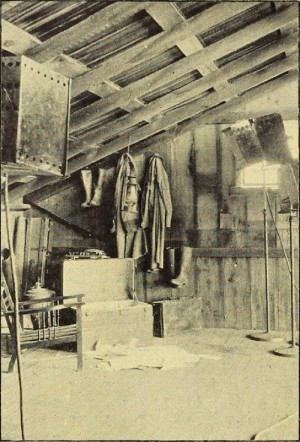
"Galleon Gold, 1600 ft., 16 mm., produced by the San Jose Players under the leadership of John C. Waterhouse, strikes a more sober note. This entertaining drama of the youth of a venerable Spanish family, who discover the treasure trove of the Conquistadores in time to save the family hacienda from the encroachment of the lime quarries, contains much good photography, a smooth continuity, experienced acting and first rate direction." Movie Makers, Sept. 1930, 569.
"Galleon Gold, 1600 ft., 16mm., produced by the San Jose Players, deserves special mention for its smooth flowing continuity alone. Although the difficulty of securing a lucid continuity is greatly increased in a longer dramatic picture, the producers of this film have achieved perfect clarity. This film was made during a summer vacation at a mountain ranch and it seemed at first that the lack of electric current for lighting would be an insuperable obstacle since the script called for many interior scenes. The problem was finally solved by a portable motor generator driven by a gas engine which, with proper lighting equipment, made ample illumination possible." Movie Makers, Dec. 1930, 788.
"Glimpses of Rural Hungary was the first film ever made by Elizabeth Rearick but its excellence must be credited to more than beginner's luck. It represents a willingness to follow instructions carefully and an ability to compose scenes as they are selected. The picture contains a charming record of the people and customs of Hungary, but capturing this was secondary, for Miss Rearick planned the film to be principally a record of folk dances. Most unusually accurate exposure and focusing make the film outstanding in its technical aspects. Clear, crisp, steady pictures inevitably do a great deal to present a subject in a delightful way. One of the remarkable features of the film was the rock steadiness of the camera, although Miss Rearick did not use a tripod at any time. The sequencing is worked out well and, although the film is intended for use in physical education work, it has a tremendous general interest value. The entire finished product is one of which an experienced filmer might well be proud." Movie Makers, Dec. 1933, 500.
"The Golden West, as this amateur movie was titled by its maker. whose identifty is lost, tours America's Riviera," as the film rather grandiosely labels the Los Angeles region.... It focuses on public places and seldom the filmmaker's family members, who are onscreen largely to illustrate local customs...." (Scott Simmon) During a ride on a blimp, the filmmaker shoots aerial footage of Los Angeles and area, including some of the local film studios. Other sequences include a visit with B-movie actor George O'Brien, on set at RKO, and a Shriners Parade at the Los Angeles Memorial Colosseum, where floodlights illuminate floats representing various Hollywood studios.
The filmmaker is not credited. In archivist Lynne Kirste's commentary for the excerpt in Treasures 5, he is described as an unidentified amateur filmmaker from Pennsylvania.
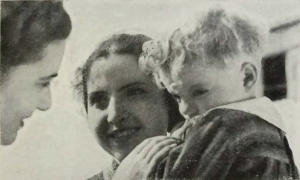
"a sogg. lungh. norm." Feature fiction film
"La grande casa, realizzato da Guido Pallaro, Cesco Cocco, Fernando de Marzi, soggetto di Giulio Fracarro, operatore Antonio Schiavinotto, interpreti Livia Lauri, Otello Toso, Lia Zanolla, Ario Chiarin, Luisa Sironi, aiuto Giorgio Pomerri. II film prodotto dalla Sezione Cinematografica del GUF di Padova che nelle prove precedenti ha dimostrato di possedere un buon numero di elementi volonterosi e di sicure possibilità, risente nel suo complesso della bontà della organizzazione; e questo un elemento da tener presente, perché mostra che ove alla buona organizzazione si venga ad aggiungere una piu persuasiva forza artistica, il gruppo Padovano potrà raggiungere risultati cospicui. Il difetto della Grande Casa sta appunto nella mancanza di forza interiore. Il tema prescelto, la costruzione della Casa dell'assistenza, non è stato svolto in uno scenario organico e provvisto di elementi atti a permettere una realizzazione più serrata e convincente; invece la narrazione è un po' preoccupata, lenta e dispersiva. Comunque il film non manca di momenti felici, di qualche buona descrizione ambientale, di sobrietà interpretativa; cosi pure l'assenza di retorica e un elemento da non trascurarsi e che torna a vantaggio della produzione."
"The Great House (La grande casa), by Guido Pallaro, Cesco Cocco, Fernando de Marzi, subject by Giulio Fracarro, cameraman Antonio Schiavinotto, actors Livia Lauri, Otello Toso, Lia Zanolla, Ario Chiarin, Luisa Sironi, assistant Giorgio Pomerri. The film produced by the Padua GUF Cinematographic Section, which in previous tests has demonstrated that it possesses a good number of willing elements and certain possibilities, suffers in its entirety from the virtue of the organization; and this is an element to keep in mind, because it shows that where good organization is added to a more persuasive artistic force, the Paduan group can achieve significant results. The defect of The Great House is precisely in its lack of inner strength. The theme chosen, the construction of the House of assistance, was not carried out in an organic scenario nor was it provisioned with elements to allow a more tight and convincing direction; instead the narrative is a little worried, slow and scattered. However, the film does not lack apt moments, of some good environmental description, of interpretative sobriety; so also the absence of rhetoric is an element not to be neglected and that returns to the advantage of the production."
—Il ventuno 28 (Review of the G.U.F. of Venice), May 1935
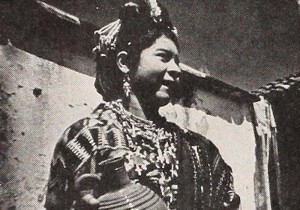
"Ralph E. Gray's 1939 entry, Guatemala, the Glorious, is another of those studies of Central American lands for which this fine filmer is noted. No less an ethnologist than a movie maker, Mr. Gray has an insatiable curiosity which always runs to the unusual and striking folkways of the countries he records in Kodachrome. He has found these folkways in Guatemala, as he has found them before in Mexico, and he knows the trick of making them interesting, by a most intelligent interplay of distant, medium and close views. He has footage of the mysterious ceremony at Chichicastenango which has not been obtained before, as he filmed the interior of the church for the first time. Mr. Gray's editing and titling bear evidences of haste, without which his entry would have won higher rating, but, in spite of these, it maintains his high standard of fascinating subject matter expertly presented." Movie Makers, Dec. 1939, 634.
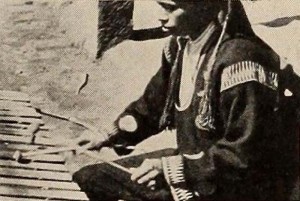
"Opening with a superb trick title in Kodachrome, Guatemalan Rainbow, by the late Ripley W. Bugbee and Robert W. Crowther, carries the audience on an ocean voyage from New York City to the mountain villages of Guatemala, where Mayan mysteries are still celebrated and where the world is a riot of indescribable color. No sequences of the leisure and pleasure of shipboard life have excelled those in this picture. Dexterously, the ritual of afternoon tea was captured with the same finish as if the scenes had been directed in a studio. Active sports and lazy afternoons are recalled in the picture with idyllic beauty. After several minutes of rather less interesting and distinguished footage, the production reaches another high in the presentation of the descendants of the Mayans, whose markets, customs and religious observances are dramatically and expertly chronicled. The whole is accompanied by a satisfactory musical setting." Movie Makers, Dec. 1938, 619.
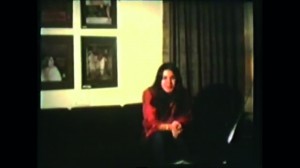
“1978 yapımı Vedat Türkali’nin senaryosu yazdığı Süreyya Duru’nun yönettiği Güneşli Bataklık filminin kamera arkasında çekilen 1979 yapımı bir belgeseldir. İlk defa 1. Uluslararası İşçİ Filmleri Festivali kapsamında gösterilmiştir. Kaya Tanyeri tarafından festival komitesine verilen 8mm filmler, dijital hale getirilmiş 25 yıl sonra ilk defa gösterilmiştir.” Sinematek.tv: http://sinematek.tv/gunese-donuk-kamera-1979/ (9 November 2019).
“It is a behind-the-scenes documentary of Güneşli Bataklık (1978) [Sun over the Swamp] whose scenarist is Vedat Türkali and director is Süleyman Duru, made in 1979. For the first time, The 1st International Workers’ Films Festival screened the film. The 8mm film given by Kaya Tanyeri to the festival committee was digitized and screened 25 years after its production first.” Sinematek.tv: http://sinematek.tv/gunese-donuk-kamera-1979/ (9 November 2019).
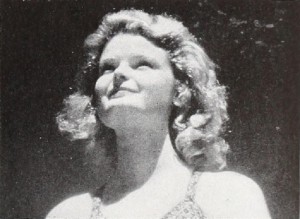
"To the production of Hail, British Columbia!, Leo J. Heffernan brought the filming talent and the fertile imagination that have marked his previous pictures. But, in this film, he has surpassed himself. He has produced a travelog, a scenic film or a record of British Columbia that covers all the diverse high lights of that province, but which still has unity. He has made a movie that is technically superior to the best theatrical travelogs, and certainly more entertaining. Mr. Heffernan has two great gifts — the capacity to improvise sequences during his travels and the ability to invent amusing and apparently natural episodes that fit the theme of his picture. This latter gift is a dual one, for it includes the ability to direct actors — people whom Mr. Heffernan meets here and there and persuades to "take a part" in his movie. The continuity of Hail, British Columbia! is ingenious and suavely followed. A girl gets off a Canadian train at a way station, where she finds a "Mountie." To him, she puts the problem, "What should I see in British Columbia?" The Mountie is somewhat taken aback, but he gradually recalls things to tell a tourist, and the picture unfolds his story. Heffernan like, there is a surprise twist at the end, which we shall not spoil by telling. Discussion of Hail, British Columbia! would be incomplete without at least a mention of the magnificent logging sequence, the clever camera work in presenting a story of a bicycle ride, the beautiful scenic shots and Canada's blondes! This picture has everything!" Movie Makers, Dec. 1941, 541.
"Item is a film of a trip to Hawaii taken by Dr. Willinsky and his wife, Sadie. In the form of a travelogue, footage of Hawaii's landscape, vegetation, landmarks and local population is interspersed with captions that were added in by Dr. Willinsky to provide information about the country's culture. Footage includes shots of sites around Honolulu and Waikiki, surfers, Hawaiian flowers, churches and temples, sugar cane farming and singers performing outside a hotel. Sadie is occassionally spotted exploring the sites and interacting with locals."
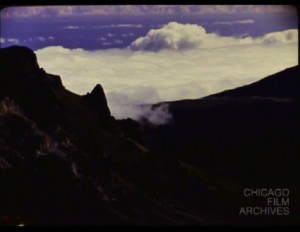
"2 part travelogue film of Hawaii capturing the scenery, resources and people of the islands. Part 1 visits to a lava flow and other natural wonders such as Haleakala Creater and a black sand beach as well as numerous shores and valleys along the way. Stop motion animation of a toy car or ship tracks a change in location. Part 2 features footage of tropical flowers, picking coconuts, family picnic, farming and factory processing pineapple, Hula dance performances, surfing and canoeing competitions, and sunsets."
Total Pages: 15